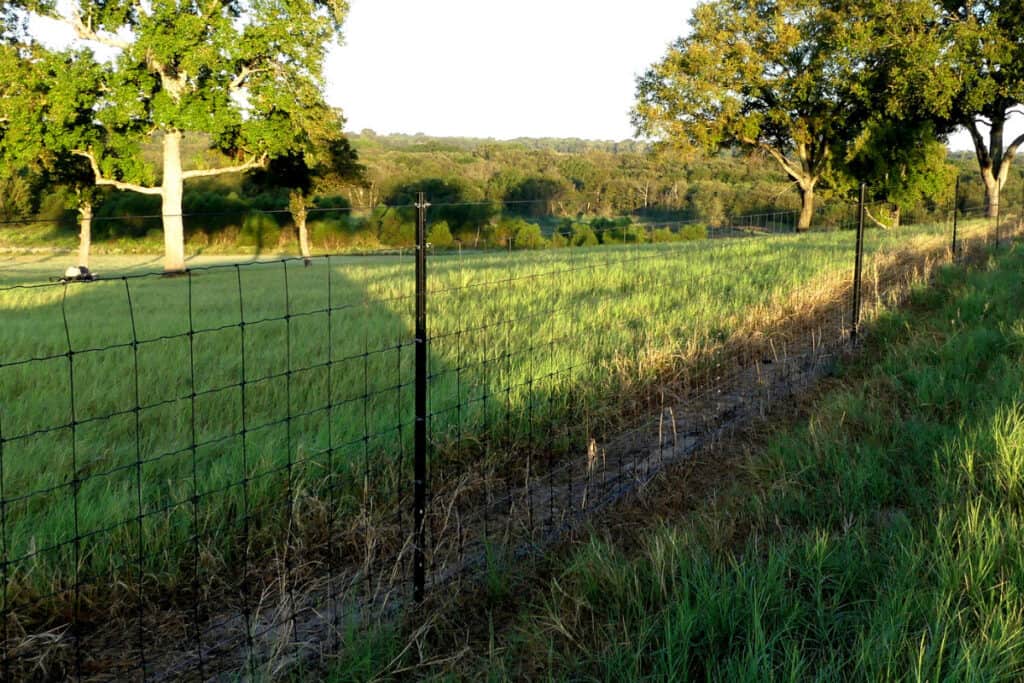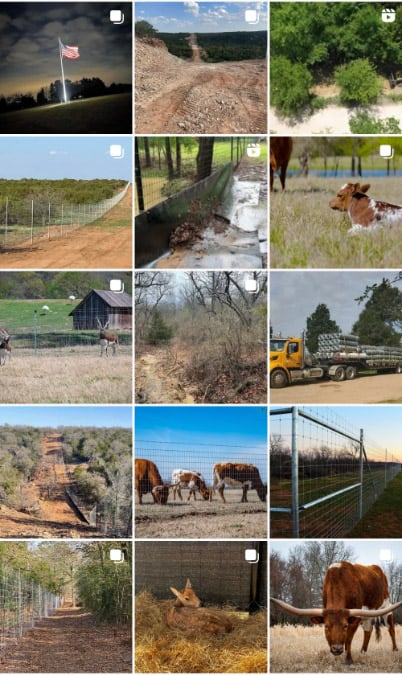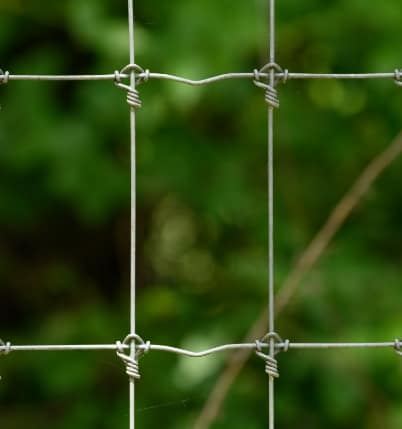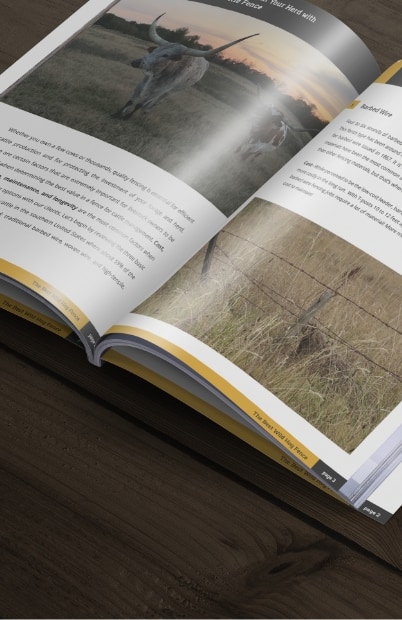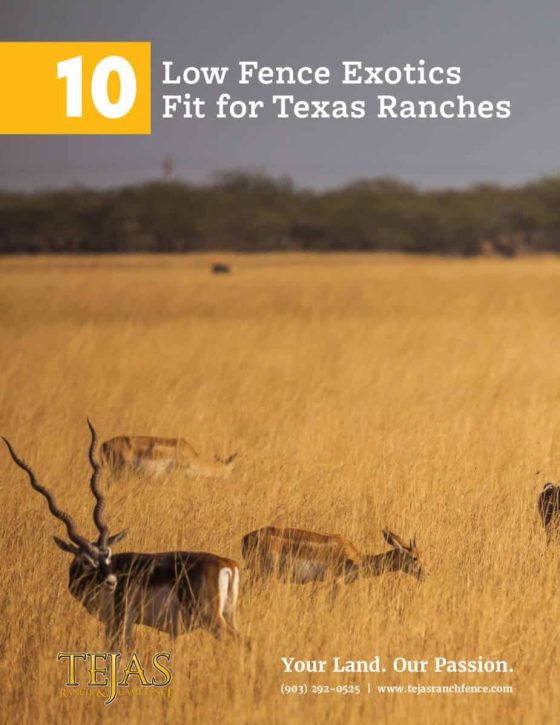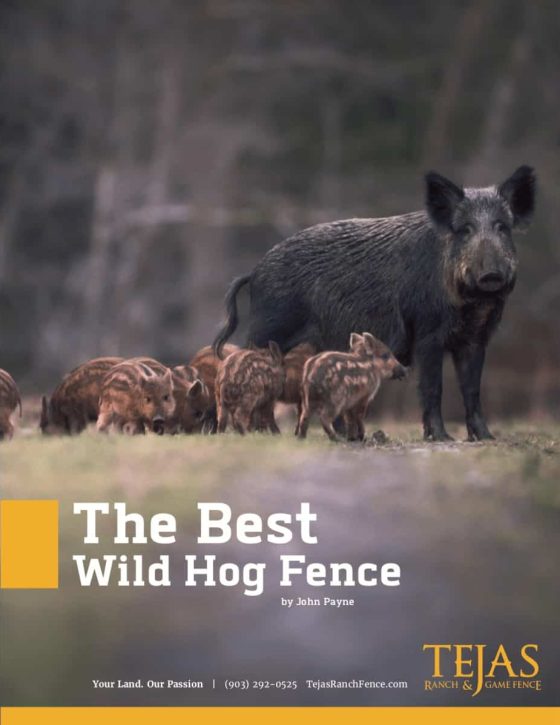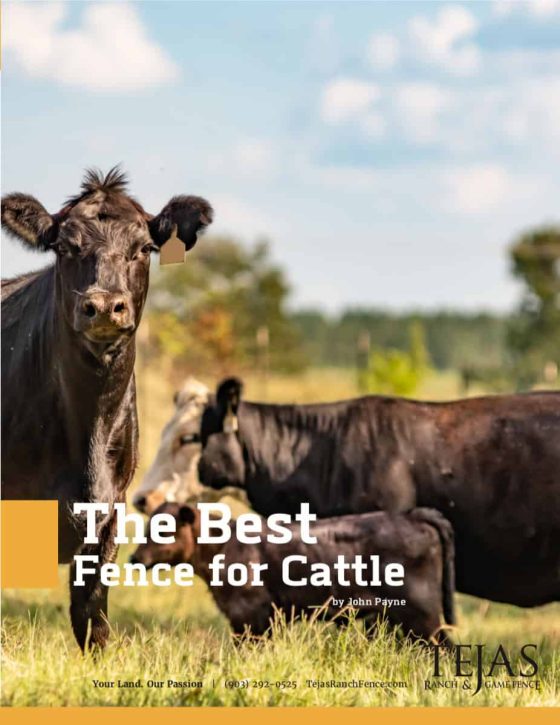Choose the right Stay-Tuff fixed-knot fence pattern for your ranching needs
Long have farmers, ranchers and landowners been seeking the most durable, effective fencing solution. Fencing technologies have evolved throughout the years. From wooden fences to barbed wire to field fence, things have changed. And they’re changing again thanks to Stay-Tuff and its variety of fixed-knot fence patterns.
What is Fixed-Knot Fencing
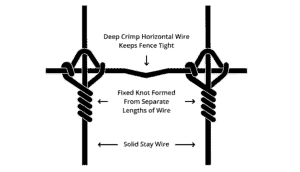 Those who are unfamiliar with this type of fencing should understand just how advanced it is. While traditional field fences implement a hinged-joint knot to join both vertical and horizontal wires. It is formed by wrapping the vertical stay wire around the line wire. This knot can lead to a distorted fence when increased pressure is applied. Fixed-knot helps solve this issue. It utilizes a separate piece of wire that’s tightly wound and knotted around the line and stay wires. It offers many advantages.
Those who are unfamiliar with this type of fencing should understand just how advanced it is. While traditional field fences implement a hinged-joint knot to join both vertical and horizontal wires. It is formed by wrapping the vertical stay wire around the line wire. This knot can lead to a distorted fence when increased pressure is applied. Fixed-knot helps solve this issue. It utilizes a separate piece of wire that’s tightly wound and knotted around the line and stay wires. It offers many advantages.
Selecting a Fence Pattern
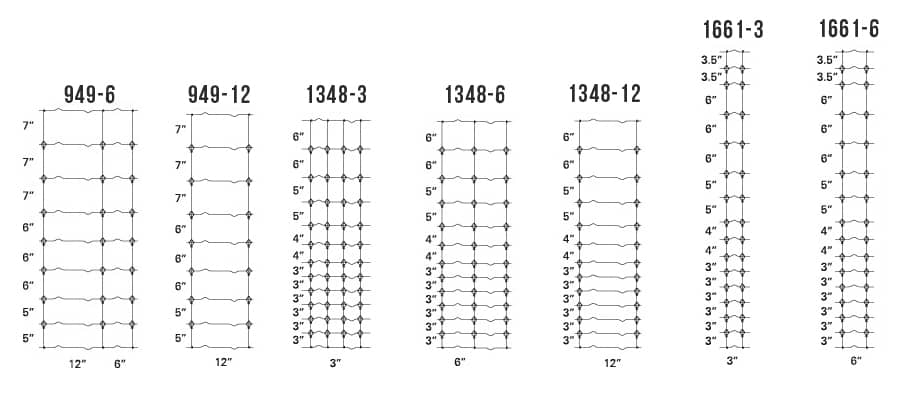 There are many different case uses for this fencing. From livestock to game animals to pets, each of these have different needs and requirements in an effective fence. Every animal is different, and in many cases, the fence should be different, too. Fortunately, Stay-Tuff offers a variety of fixed-knot fence patterns, and rest assured that there is one for your farming and ranching needs.
There are many different case uses for this fencing. From livestock to game animals to pets, each of these have different needs and requirements in an effective fence. Every animal is different, and in many cases, the fence should be different, too. Fortunately, Stay-Tuff offers a variety of fixed-knot fence patterns, and rest assured that there is one for your farming and ranching needs.
Those who choose to go with Stay-Tuff fencing will benefit from many advantages and features. It comes in pre-stripped rolls, includes heavy-duty galvanization, and has a 20-year warranty. Furthermore, the appropriate, recommended fence pattern offers significant advantages for the associated case use.
Cattle Fence Patterns
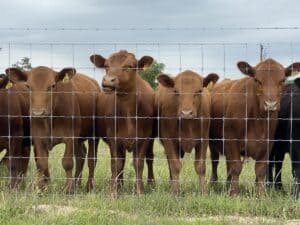 We love milk, burgers and steaks, and we also love good fencing that keeps them contained until time to journey toward the dinner table. Beef and dairy cattle are the lifeblood of this nation’s ranching heritage. And Cattle-Tuff is made to help protect it. It’s perfect for pastures and other enclosures.
We love milk, burgers and steaks, and we also love good fencing that keeps them contained until time to journey toward the dinner table. Beef and dairy cattle are the lifeblood of this nation’s ranching heritage. And Cattle-Tuff is made to help protect it. It’s perfect for pastures and other enclosures.
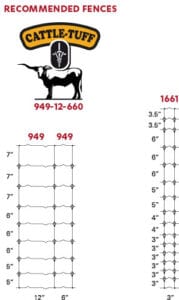
It offers numerous perks. First, it installs for the same as a five-strand barbed-wire fence. It uses up to 40% less posts than barbed wire, which ultimately reduces labor costs. Interestingly, it’s stronger than 9-gauge hinged-joint or barbed-wire. It lasts three times as long as hinged-joint fencing. It also remains tighter and doesn’t lose its shape, absorbing impacts much better. So, forget sagging.
Drilling down on fence pattern offerings, 949-12 is a solid choice for cattle fences. It’s perfect for boundary and pasture fences, as well as low-pressure areas, and offers cost savings over longer distances with its 12-inch spacing. Another option is 949-6, and with its strong, 6-inch spacing, it’s best suited for internal and corral fencing, as well as other high-pressure areas. 1661-3 is another good choice, and it too is a worthy product for corrals and high-pressure areas.
Fixed Knot Fence Patterns for Hogs
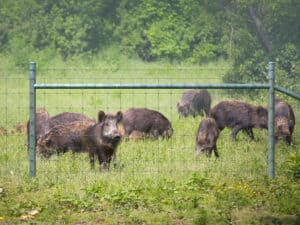 Wild hogs are a significant threat to property owners throughout the southern United States. A recent estimate puts the population of these feral hogs at 2.6 million in Texas alone. Thankfully, Hog-Tuff helps keep your land investment protected with a high-tension fixed knot fence pattern built to keep the strongest of wild hogs out.
Wild hogs are a significant threat to property owners throughout the southern United States. A recent estimate puts the population of these feral hogs at 2.6 million in Texas alone. Thankfully, Hog-Tuff helps keep your land investment protected with a high-tension fixed knot fence pattern built to keep the strongest of wild hogs out.
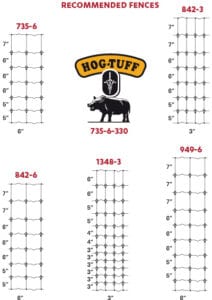 Land owners will love Stay-Tuff for numerous reasons. First, its woven, fixed-knot design restricts entry and breaches in the fence. The knots hold strong, even when unruly hogs press and wallow against the fence. It offers great elasticity when they do engage the fence, and returns to its proper resting position after they disengage. Plus, it’s super cost-effective and high in value.
Land owners will love Stay-Tuff for numerous reasons. First, its woven, fixed-knot design restricts entry and breaches in the fence. The knots hold strong, even when unruly hogs press and wallow against the fence. It offers great elasticity when they do engage the fence, and returns to its proper resting position after they disengage. Plus, it’s super cost-effective and high in value.
There are several options available with the purpose of keeping hogs out and livestock in. First, 735-6 and its economic 6-inch spacings are perfect for low-pressure areas such as feral hog exclusions, pasture, interior and cross fences. Other solid routes, 842-3, 1348-3 and their 3-inch spacings offer tighter gaps, making these perfect for predator control, exclusion fences, raceways, breeding pens and other high-pressure areas. Finally, 842-6 and 949-6 are designed for pastures, interior and cross fences, as well as other medium- to high-pressure areas.
Horse Fence Fixed Knot Patterns
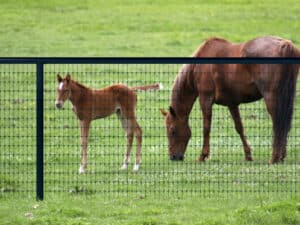 Major professional assets and recreational animals alike, horses are the pride and joy of the western way of life. Without them, the ranch isn’t the ranch. They’re more a part of the family, really, and protecting them is of the utmost importance.
Major professional assets and recreational animals alike, horses are the pride and joy of the western way of life. Without them, the ranch isn’t the ranch. They’re more a part of the family, really, and protecting them is of the utmost importance.
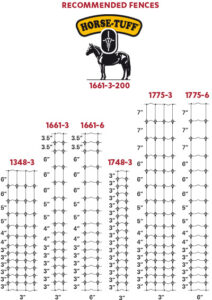 Naturally, Stay-Tuff offers an array of products to do just that. Say-Tuff fixed-knot installs for less than traditional horse fencing. Smaller spacing helps prevent hooves and legs from going through the fence. It’s also corrosion and rust-resistant, and lasts three to four times longer than low-tensile horse fencing. It can even be used with rail fences.
Naturally, Stay-Tuff offers an array of products to do just that. Say-Tuff fixed-knot installs for less than traditional horse fencing. Smaller spacing helps prevent hooves and legs from going through the fence. It’s also corrosion and rust-resistant, and lasts three to four times longer than low-tensile horse fencing. It can even be used with rail fences.
Observing horse fence options, 1348-3, 1661-3, 1748-3, and 1775-3 are great for stalls, holding pens, runways, and other crowded areas. The 3-inch spacing is very durable, resists pawing, and holds its shape. 1661-6 and 1775-6 are great for pastures, exterior, perimeter fences, and other low-pressure areas. Choose from the height variations based on your needs. Taller fences are better for preventing horses from necking down on the fence.
Sheep and Goats
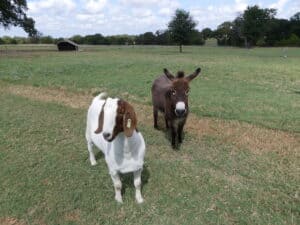 Those who raise stubborn sheep and goats understand just how challenging it is to manage fencing. They’re quick to get out and even harder to get back in once they escape. And let’s not forget how challenging it is to prevent entrance to predators, such as bobcats, foxes, coyotes, dogs, and even toothier animals.
Those who raise stubborn sheep and goats understand just how challenging it is to manage fencing. They’re quick to get out and even harder to get back in once they escape. And let’s not forget how challenging it is to prevent entrance to predators, such as bobcats, foxes, coyotes, dogs, and even toothier animals.
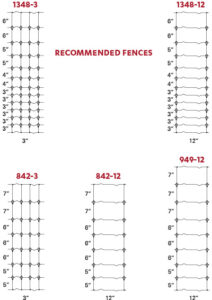 Stay-Tuff has you covered here, too. Its economical fencing solutions are abundant, and the total construction cost for fixed-knot is more affordable than net wire with barbed wire. It resists rust and corrosion, offers superior strength, resists impact, sags very little, and requires little to no maintenance.
Stay-Tuff has you covered here, too. Its economical fencing solutions are abundant, and the total construction cost for fixed-knot is more affordable than net wire with barbed wire. It resists rust and corrosion, offers superior strength, resists impact, sags very little, and requires little to no maintenance.
Stay-Tuff’s 3-inch spacings, offered in 842-3 and 1348-3, are both great for pastures, exteriors, raceways, birthing areas, kid pens, holding pens, and other high-pressure spots. These are also great for predator control. Similarly, 842-12, 949-12, and 1348-12 are excellent for pastures, interiors, cross fencing, and other low-pressure enclosures.
Bison
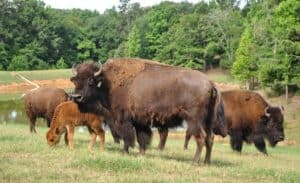 Still an icon of the West, bison are now common ranch occupants. These are found throughout the nation. It’s no longer uncommon to see a herd of bison behind enclosures.
Still an icon of the West, bison are now common ranch occupants. These are found throughout the nation. It’s no longer uncommon to see a herd of bison behind enclosures.
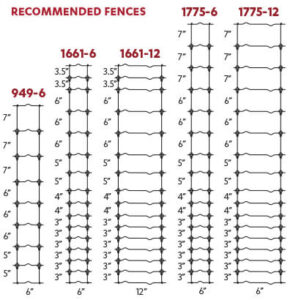 As such, Stay-Tuff provides a reasonable route to a very strong, low-maintenance fence. It’s stronger than 9-gauge bull wire, withstands ice and snow, keeps its shape, and resists rust and corrosion. Bison can try to give the fence the horns, but fixed-knot is tough enough to take it.
As such, Stay-Tuff provides a reasonable route to a very strong, low-maintenance fence. It’s stronger than 9-gauge bull wire, withstands ice and snow, keeps its shape, and resists rust and corrosion. Bison can try to give the fence the horns, but fixed-knot is tough enough to take it.
Those looking to install it have several pattern options. Thanks to 6-inch spacing, 949-6 is great for internal enclosures, corral fences, and other high-pressure locations. Next, 1661-6 is great for boundary fencing and other medium-pressure areas. It’s a higher fence, but still economical with 6-inch spacing. Third, 1661-12 is another solid option for boundary fences and high-pressure enclosures, but offers a better price. Finally, 1775-6 is perfect for pastures, exterior boundaries and cross fences. It’s durable, and the height discourages necking down.
Elk
 Another staple of the West — and East considering historic and modern herds along the Appalachian range — the American elk is an animal people revere. That’s true for ranchers who have private herds, too.
Another staple of the West — and East considering historic and modern herds along the Appalachian range — the American elk is an animal people revere. That’s true for ranchers who have private herds, too.
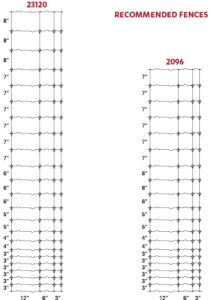
There are numerous advantages to fixed-knot for elk. It can easily resist impacts from testosterone-driven bulls. It resists ice and snow loads. Fewer posts are needed, reducing material and installation costs. Knots are stripped on both ends of the fence, are ready to tie, and saves 20 to 30 minutes per roll.
Analyzing options, 2096-12 and 23120-12 are great for boundary fence, elk exclusions, and other low-pressure areas. Next, 2096-6 and 23120-6 are designed for boundary fencing and medium- to high-pressure enclosures. Third, 2096-3 and 23120-3 are great for breeding and calf pens, and other high-pressure areas. The tight, 3-inch spacing offers increased strength and helps to control smaller animals.
Deer and Other Exotics
Whitetails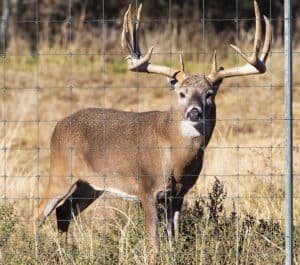 have long been North America’s most popular game animal. Other native deer species, such as mule deer, as well as exotics, such as axis, thrive in North America. Today, many of these are held on private farms and ranches.
have long been North America’s most popular game animal. Other native deer species, such as mule deer, as well as exotics, such as axis, thrive in North America. Today, many of these are held on private farms and ranches.
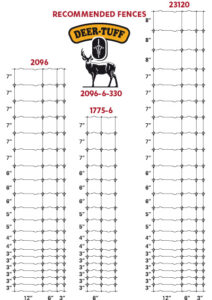 Fixed-knot fencing works for these animals, too, and offers numerous advantages. Knots do not break or slide, the fencing resists impacts, and it doesn’t stretch or sag. It resists access to predators, and really cuts down on labor costs.
Fixed-knot fencing works for these animals, too, and offers numerous advantages. Knots do not break or slide, the fencing resists impacts, and it doesn’t stretch or sag. It resists access to predators, and really cuts down on labor costs.
Those fencing an area for deer have plenty of options. Both 2096-12 and 23120-12 are good boundary fence, deer exclusions and other low-pressure areas. 2096-6 and 23120-6 serve as boundary fence, as well as other medium- to high-pressure areas. 2096-3 and 23120-3 are great breeding and fawn pens, plus other high-pressure areas. Lastly, 1775-6 is designed for internal fence for smaller deer species, but consider the jump height of the species before selecting it.
Fixed Knot Fence Patterns for Dogs
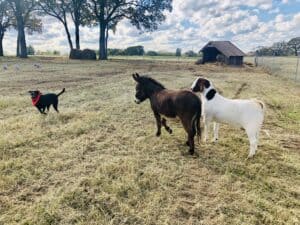 While many might not consider it necessary to use fixed-knot fencing for canines, it certainly is. Our dogs are our family, and keeping them from access unwanted or dangerous areas is important. Keeping unwanted dogs from accessing areas is common, too.
While many might not consider it necessary to use fixed-knot fencing for canines, it certainly is. Our dogs are our family, and keeping them from access unwanted or dangerous areas is important. Keeping unwanted dogs from accessing areas is common, too.
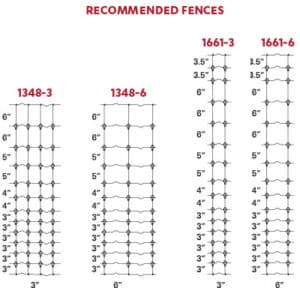 Like with other applications, fixed-knot has advantages over other options. Foremost, it costs 30-50% less than chain link, and doesn’t unravel if a wire is cut. Tight pattern spacings prevent even small dogs from passing through it. The longevity is three to four times that of hinge-joint fencing. It can be installed with wood or steel posts and rails. And it’s more economical than welded panels in the same heights.
Like with other applications, fixed-knot has advantages over other options. Foremost, it costs 30-50% less than chain link, and doesn’t unravel if a wire is cut. Tight pattern spacings prevent even small dogs from passing through it. The longevity is three to four times that of hinge-joint fencing. It can be installed with wood or steel posts and rails. And it’s more economical than welded panels in the same heights.
Finding the right pattern is as simple as knowing how the fence will be used. Those looking to fence kennels and yards might consider 1348-3. It has 3-inch spacing, so even small dogs can’t get through it. Those fencing yards, but who don’t have small dogs, might consider 1348-6, which has 6-inch spacing. Someone with both tall and small dogs might select 1661-3, as it’s good for kennels, runs and yards. And 1661-6, which has a 6-inch pattern, is right for both medium to large canines within runs and yards.
The variety of fence patterns for fixed knot fencing can seem daunting at first. Grouping these fence pattern options by the intended use makes it much easier to make your fencing decision. For a more detailed discussion about the right fixed knot fence for your use, contact a Tejas ranch fence expert.
